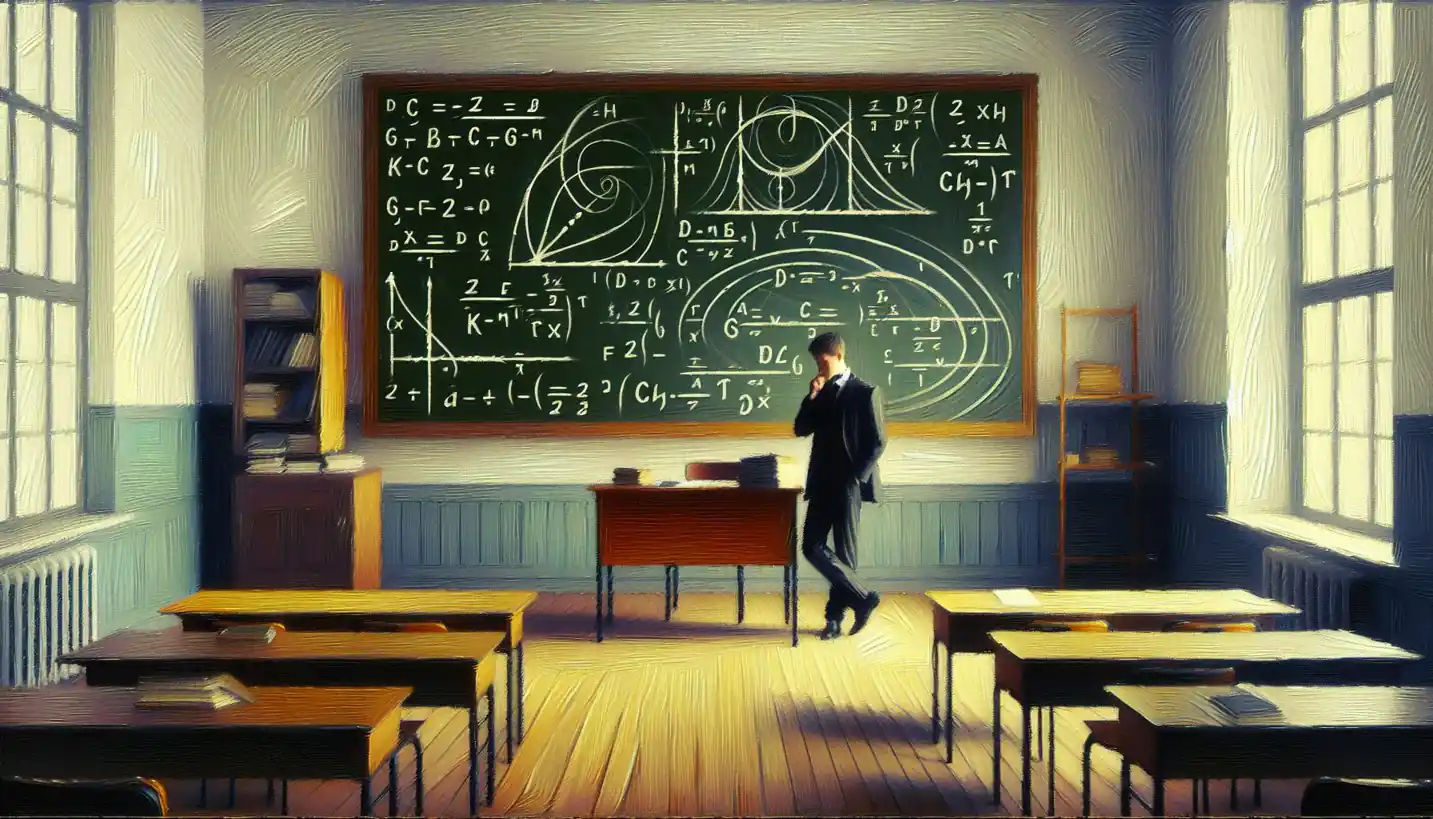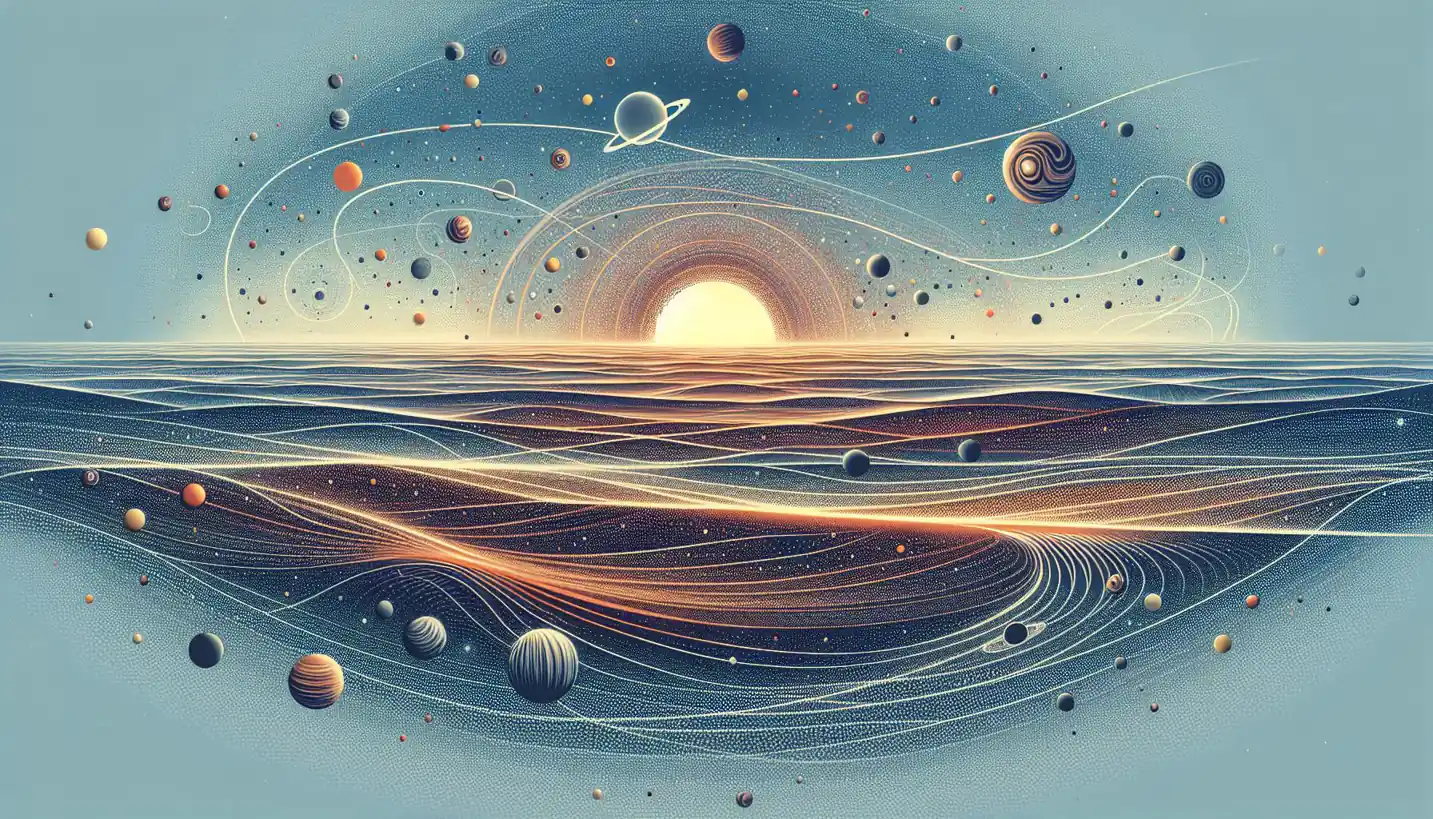· Physics · 5 min read
AdS/CFT Correspondence: Unlocking the Universe's Mysteries Through String Theory
AdS/CFT correspondence links disparate theories, offering a window to the universe. Explore this powerful concept and its profound implications in physics.

So, the story begins in a world of mind-bending theories and cosmic wonders. Picture yourself diving into the depths of a scientific concept that’s as fascinating as it is complex: the AdS/CFT correspondence. This is a cornerstone in the world of string theory and theoretical physics, bridging the gap between two powerful frameworks that, at first glance, seem worlds apart.
What is AdS/CFT Correspondence?
At its core, the AdS/CFT correspondence is a theoretical framework that connects two very different types of spaces. The “AdS” part stands for Anti-de Sitter space, which is a strange kind of curved space you’d find if you could journey to the edge of a theoretical universe. This space acts somewhat like a stage where the drama of gravity unfolds.
The “CFT,” on the other hand, is about Conformal Field Theory. Imagine a flat, holographic screen that contains all the information needed to describe this curved world. This theory deals with fields and particles in a universe where there’s no gravity pulling at your feet or tugging at the stars.
Now, here’s the twist: these two seemingly distinct realms are believed, with the grandeur of string theory, to describe the same reality. It’s like discovering that the notes of a symphony exist simultaneously in two different worlds, yet they play the exact same melody.
The Birth of a Revolutionary Idea
The idea of the AdS/CFT correspondence came to life in the mind of physicist Juan Maldacena in the late 1990s. He proposed that a gravity-filled universe inside AdS space could be equivalent to a gravity-free universe operating on the CFT framework. It was like suggesting that a 3D object could also be fully represented in 2D, a concept that left physicists both awestruck and puzzled.
Why Does It Matter?
This correspondence isn’t just a quirky notion. It fundamentally challenges and extends our understanding of the universe. For one, it provides insights into quantum gravity, the elusive theory that aims to harmonize quantum mechanics with Einstein’s relativity. It’s like finding a bridge that connects two islands of knowledge that seemed isolated.
Furthermore, AdS/CFT is a tool for decoding the secrets of black holes. Traditionally, these celestial enigmas refuse to surrender their mysteries easily. But through this correspondence, it’s like having a new translation of an ancient manuscript that holds the stories of stellar collapse.
How Does It Work?
To grasp how AdS/CFT actually operates, imagine a hologram. In this analogy, the 3D universe within AdS space is akin to the actual object, while the 2D boundary, the CFT, acts as the hologram itself. Although one is a lower-dimensional version, both contain equivalent amounts of information, offering different perspectives on the same entity.
In practical terms, physicists leverage this correspondence to perform complex calculations. Problems that are intractable in one framework might be simpler in the other. It’s like having a cheat sheet for some of the most complicated puzzles in physics.
Real-Life Applications
While AdS/CFT is deeply rooted in abstract theory, it surprisingly has real-world implications. Researchers are using it to improve our understanding of condensed matter physics, the study of materials. It offers insights into phenomena like superconductivity, where certain materials can conduct electricity with zero resistance.
Moreover, AdS/CFT finds its utility in the realm of quantum computing and cybersecurity. By better understanding information theory through this lens, we get closer to cracking the codes for faster, safer digital communications.
The Big Questions
Yet, as with all things awesomely profound, this concept opens as many questions as it answers. Could AdS/CFT be the key to a unified theory that physicists have been dreaming of for decades? Might it unravel the cosmic secrets of dark matter and dark energy, the mysterious forces that shape our universe yet remain largely unseen?
These are the questions that keep physicists up at night, driven by the allure of discovery and the hope of comprehension. The potential applications extend into realms of science still unnamed, like a treasure map partially obscured by the sands of our understanding.
The Cutting Edge
Exploration into AdS/CFT continues to push the boundaries of theoretical physics. Researchers experiment with different dimensions and configurations, expanding the correspondence to include other types of spaces and theories. It’s a dynamic field, where the possibilities seem as limitless as space itself.
Every new finding strengthens our belief in this correspondence and opens up avenues formerly unimaginable. As technology evolves and computational capabilities grow, we can anticipate revelations that will further transform the scientific landscape.
Conclusion
In the end, the AdS/CFT correspondence stands as a testament to human curiosity and ingenuity. It’s more than a scientific theory; it’s a symbol of our quest to understand the universe on its grandest scales as well as its tiniest particles.
So, next time you find yourself gazing at the stars or pondering the mysteries of the cosmos, remember that behind those celestial wonders lies a tapestry woven with ideas like AdS/CFT. In this journey, we inch closer to answering the profound question: What is the nature of reality? And who knows? Perhaps one day, this correspondence will unlock secrets that change everything we know about our place in the universe.


